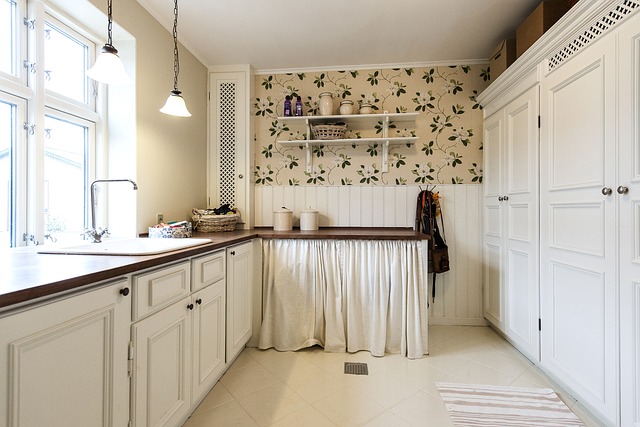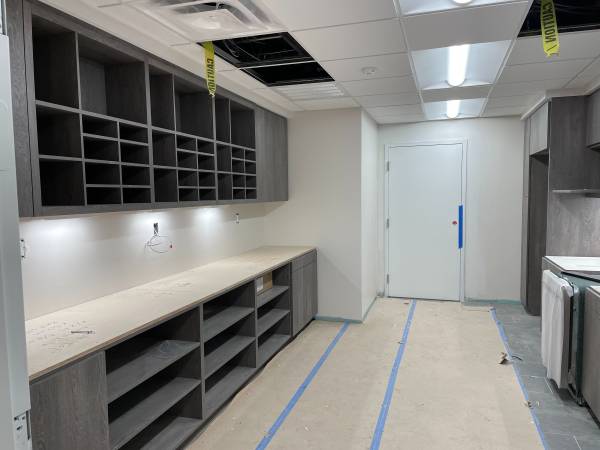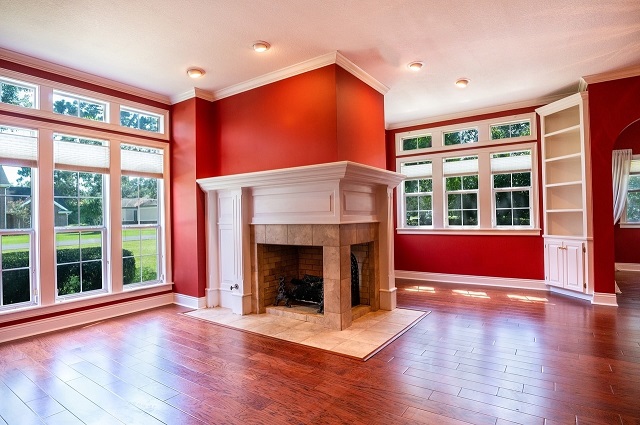Table of Contents
Assessing your kitchen’s needs and goals
Assessing your kitchen’s needs and goals is an essential first step before embarking on a remodeling project. It is important to take a close look at your current kitchen layout, functionality, and storage capacity. Consider how you use your kitchen on a daily basis and identify any pain points or areas where improvement is needed. Are you lacking counter space? Is your storage insufficient? Do you require more natural light? By asking these questions, you can identify the specific needs and goals for your kitchen remodel.
Once you have assessed the needs of your kitchen, it is equally important to establish your goals for the project. What do you hope to achieve with the remodel? Are you looking to create a more open and spacious kitchen? Do you want to upgrade to modern, energy-efficient appliances? Are you aiming for a specific design style, such as a sleek and contemporary look or a rustic farmhouse vibe? Defining your goals will provide a clear direction and vision for the remodel, ensuring that every decision throughout the process aligns with your desired outcome.
Setting a budget for your kitchen remodel
When embarking on a kitchen remodel, one of the first and most crucial steps is to set a budget. Having a clear and realistic budget in mind will help guide your decisions and ensure that you stay within your financial limits. Start by assessing your current financial situation and determining how much you are willing and able to spend on the remodel. Consider factors such as your income, savings, and any financing options that may be available to you. It’s important to be honest with yourself and set a budget that you can comfortably afford without putting a strain on your finances.
Once you have a budget in place, it’s time to prioritize your needs and goals for the remodel. Make a list of the aspects of your kitchen that you most want to change or improve, and assign a portion of your budget to each item. This will help you allocate your resources effectively and avoid overspending in one area at the expense of another. Remember to factor in the cost of labor, materials, and any additional expenses that may arise during the remodel. By carefully planning and setting a budget that aligns with your needs and goals, you can ensure a successful kitchen remodel that brings value and enjoyment to your home.
Researching and gathering inspiration for your new kitchen design
When launch on a kitchen remodel, it is vital to invest time and effort into researching and gathering inspiration for your new kitchen design. This step allows you to explore various styles, layouts, and features that align with your personal taste and functional requirements. One useful approach is to browse through magazines, design websites, and social media platforms to gather ideas and create a visual database of your favorite kitchen designs. Additionally, visiting kitchen showrooms, attending home improvement expos, and seeking recommendations from friends and family who have recently remodeled their kitchens can provide valuable insights and inspiration.
During your research phase, it is important to consider factors such as your kitchen size, existing layout, and available budget. This will help you narrow down your options and focus on designs that are feasible for your specific circumstances. It is also crucial to keep in mind your desired level of functionality and the overall aesthetic appeal you wish to achieve. By thoroughly researching and gathering inspiration, you can develop a clear vision for your new kitchen design, ensuring that it is both practical and aesthetically pleasing.
Hiring a professional contractor or DIY-ing the remodel
When it comes to remodeling your kitchen, one important decision you’ll need to make is whether to hire a professional contractor or undertake the project as a do-it-yourself (DIY) endeavor. Hiring a professional contractor can offer several benefits. Firstly, a contractor brings a wealth of experience and expertise to the table. They have the knowledge and skillset to handle all aspects of the remodeling process, from design to installation. Additionally, professional contractors have a network of suppliers and subcontractors, making it easier to source materials and complete the project in a timely manner. By hiring a contractor, you can also ensure that the remodel will meet building codes and regulations.
On the other hand, opting for a DIY approach can be a rewarding and cost-effective choice. DIY-ing the remodel allows you to have full control over the design and execution of your kitchen project. It can be a satisfying experience to put your own creativity and skills to use in transforming your space. DIY projects also offer flexibility in terms of timeline and budget, as you can work at your own pace and allocate funds accordingly. However, it is important to consider the complexity of the remodel and your own skill level before deciding to tackle it on your own.
Creating a detailed kitchen remodeling plan
Before beginning your kitchen remodel, it’s crucial to create a detailed plan to guide the entire process. This plan will serve as a roadmap, outlining the various elements of your project and helping you stay organized throughout. Start by assessing your current kitchen layout and identifying the areas that require improvement. Consider factors such as functionality, storage space, and traffic flow. This initial evaluation will help you determine the key goals and priorities for your remodel. Additionally, think about the overall style and aesthetic you want to achieve in your new kitchen. Browse through magazines, websites, and home design catalogs to gather inspiration and ideas. By having a clear vision of your desired outcome, you can create a remodeling plan that aligns with your taste and preferences. Next, determine your budget for the remodel. Set a realistic amount that you are comfortable spending on your kitchen renovation. A detailed budget will help you make informed decisions about where to allocate your funds and prevent any unnecessary overspending. Research the costs of materials, appliances, and labor to get a rough estimate of the expenses involved. Keep in mind that unexpected costs may arise during the remodeling process, so it’s wise to factor in a contingency fund. Moreover, consider whether you have the necessary skills and expertise to tackle the remodel on your own or if you need to hire a professional contractor. Weigh the pros and cons of each option, considering your time availability, budget, and the complexity of the project. If you decide to hire a contractor, make sure to conduct thorough research and check their credentials and references. Lastly, create a detailed timeline for your kitchen remodel. Outline each step of the process and assign specific deadlines to ensure a smooth and efficient renovation. Having a well-structured plan will help you stay on track and complete your kitchen remodel successfully.
Selecting and purchasing necessary materials and appliances
One of the most exciting steps in a kitchen remodel is selecting and purchasing the necessary materials and appliances. This is where the vision you have for your new kitchen starts to come to life. To ensure you make the right choices, start by making a list of everything you need, from cabinets and countertops to sinks and faucets. Look for materials and appliances that not only fit your design aesthetic but also meet your functional needs. Consider factors such as durability, ease of maintenance, and energy efficiency. Take your time to research different options, compare prices, and read reviews to make informed decisions.
When it comes to purchasing materials and appliances for your kitchen remodel, it’s important to set a budget and stick to it. While it can be tempting to splurge on high-end products, keep in mind that there are often more affordable alternatives that offer similar quality. Consider visiting local showrooms or home improvement stores to see the materials and appliances in person. This will give you a better sense of their quality and help you make a final decision. Additionally, don’t forget to factor in delivery and installation costs when budgeting for your kitchen remodel.
Demolition and preparation of the kitchen space
To begin the process of remodeling your kitchen, the crucial first step is the demolition and preparation of the kitchen space. This involves clearing out the existing fixtures and appliances to make way for the new design. Removing the old cabinets, appliances, and countertops requires careful planning and execution to ensure a smooth transition.
During the demolition phase, it is important to take precautions to protect the surrounding areas from any damage. Covering the floors and nearby furniture with protective materials will help prevent any debris or dust from spreading throughout your home. Additionally, shutting off the main water supply and disconnecting any electrical connections should be done prior to starting the demolition process. By taking these necessary steps, you will ensure a safe and efficient start to your kitchen remodel.
• Clear out existing fixtures and appliances
• Remove old cabinets, appliances, and countertops
• Plan and execute the demolition carefully
• Protect surrounding areas from damage
– Cover floors and nearby furniture with protective materials
– Prevent debris or dust from spreading throughout your home
• Shut off main water supply
• Disconnect electrical connections before starting demolition process
Electrical and plumbing considerations for your new kitchen layout
When planning a kitchen remodel, it is crucial to consider the electrical and plumbing aspects of your new kitchen layout. These considerations ensure that your kitchen functions efficiently and safely.
First and foremost, you need to assess the current electrical system in your kitchen and determine if any upgrades or modifications are necessary. This may involve adding additional outlets or circuits to accommodate new appliances, such as refrigerators, dishwashers, and microwaves. It is also important to consider the placement of electrical outlets for countertop appliances and task lighting, as well as overhead lighting fixtures. Consulting with a licensed electrician will help you ensure that your electrical system meets code requirements and is properly installed.
Alongside electrical considerations, the plumbing layout of your kitchen is crucial for the efficient functioning of your sink, dishwasher, and any other water-using appliances. Review the current plumbing system and assess if any adjustments or updates are needed. This may include relocating pipes, installing new drain lines, or upgrading fixtures to meet your needs and preferences. Plumbing work should be performed by a licensed plumber to guarantee that all connections are secure and meet building codes.
By carefully considering the electrical and plumbing aspects of your kitchen remodel, you can create a functional and safe space that meets your needs and enhances your cooking experience. Taking the time to plan and consult with professionals ensures that your new kitchen layout will be efficient and enjoyable for years to come.
Installing new cabinets, countertops, and backsplash

When it comes to installing new cabinets, countertops, and backsplash in your kitchen, there are several important considerations to keep in mind. Firstly, you will need to carefully measure the space and ensure that the cabinets you choose will fit properly. It is also important to consider the layout and functionality of your kitchen when selecting cabinet styles and configurations. Additionally, choosing the right material for your countertops is crucial for both aesthetics and durability. Options such as granite, quartz, and laminate each have their own unique characteristics and benefits. Finally, the selection of backsplash tiles should complement the overall design scheme of your kitchen and provide a practical solution for protecting the walls from splashes and stains.
The installation process for cabinets, countertops, and backsplash can be intricate and time-consuming. It is advisable to consult with a professional contractor who has expertise in kitchen renovations and installations. They will be able to guide you through the process, ensuring that the cabinets are securely fastened to the walls and the countertops are properly sealed and leveled. Backsplash installation requires precision and attention to detail, as the tiles need to be properly aligned and grouted to achieve a seamless and polished look. Whether you choose to hire a professional or tackle the project yourself, careful planning and execution are essential for a successful installation of cabinets, countertops, and backsplash in your kitchen.
Choosing the right flooring option for your kitchen
When it comes to choosing the right flooring option for your kitchen, there are several factors to consider. Firstly, durability is key. The kitchen is a high-traffic area with a constant potential for spills and stains, so selecting a flooring material that can withstand these challenges is essential. Popular choices for kitchen flooring include ceramic tile, vinyl, laminate, and hardwood. Each of these options has its own advantages and disadvantages, so it’s important to weigh them carefully based on your specific needs and preferences.
Another important aspect to consider is maintenance. Ideally, you want a flooring material that is easy to clean and requires minimal upkeep. For example, ceramic tile is known for being low-maintenance, as it is resistant to stains and moisture. Vinyl flooring is also a popular choice due to its easy cleaning capabilities and water-resistant properties. On the other hand, hardwood flooring may require regular refinishing and sealing to maintain its appearance and durability. By evaluating the level of maintenance you are willing to commit to, you can make an informed choice for your kitchen flooring that suits your lifestyle.
Painting or refinishing walls and ceilings
Once the cabinets, countertops, and backsplash have been installed in your remodeled kitchen, it’s time to turn your attention to the walls and ceilings. Painting or refinishing these surfaces can have a significant impact on the overall look and feel of your newly renovated space.
Before you begin, make sure to properly prepare the walls and ceilings by cleaning them and filling in any cracks or holes. Sanding the surfaces may be necessary to create a smooth and even texture. Once the preparation is complete, you can choose the color or finish that best suits your kitchen’s aesthetic. Whether you opt for a bold and vibrant hue or a subtle and timeless neutral, a fresh coat of paint or a refinished ceiling can provide the finishing touch to your kitchen remodel.
Installing lighting fixtures and ventilation systems
When it comes to installing lighting fixtures and ventilation systems in your remodeled kitchen, there are a few key factors to consider. Lighting plays a crucial role in creating a functional and inviting space. Depending on the layout of your kitchen, you will want to strategically place overhead and task lighting to ensure proper illumination for cooking and food preparation. Additionally, incorporating ambient lighting options, such as recessed lights or pendant fixtures, can help create a warm and welcoming atmosphere.
Ventilation is another essential component of a well-designed kitchen. Proper ventilation helps to remove odors, heat, and moisture, making your cooking experience more enjoyable and preventing potentially harmful effects. Installing a range hood or exhaust fan is essential, as it helps to eliminate smoke and fumes generated during cooking. It is crucial to pay attention to the size and power of the ventilation system, ensuring that it effectively captures and removes cooking byproducts. Adequate ventilation not only improves the air quality in your kitchen but also helps to prolong the life of your appliances and cabinetry by reducing the buildup of grease and moisture.
Final touches and adding personal style to your remodeled kitchen
Adding the final touches and personal style to your remodeled kitchen is an exciting step that allows you to put your own unique stamp on the space. This is where you can really let your creativity shine and create a kitchen that reflects your personality and lifestyle. From choosing the right accessories to adding pops of color, there are many ways to infuse your personal style into the design.
One way to add your personal touch is through the choice of accessories. Selecting decorative elements such as artwork, plants, and cookbooks can instantly add personality to the room. Consider displaying your favorite collection of ceramics or family heirlooms on open shelves or countertops for a personal touch that tells a story. In addition, incorporating colorful utensils, vibrant dishware, and interesting textiles can inject a sense of individuality and make your kitchen feel like a true reflection of you.


